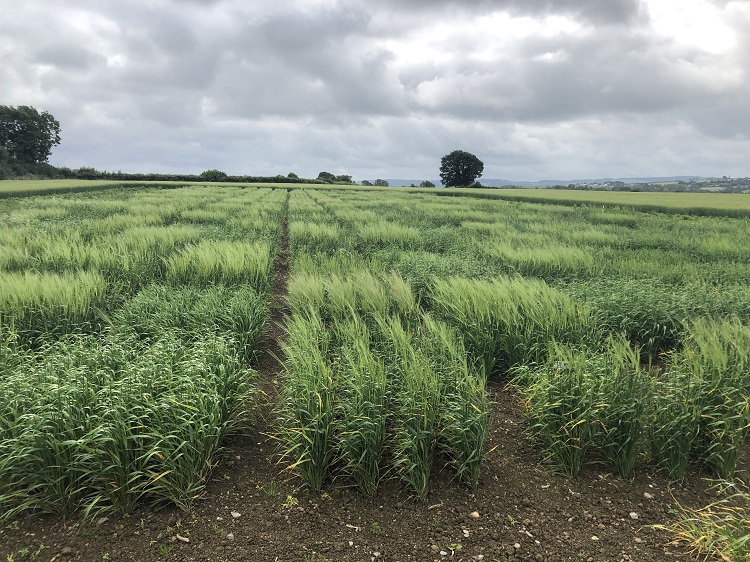Multidisciplinary approaches to studying abiotic stressors and climate resilience in barley and other crops with Dr Sónia Negrão.
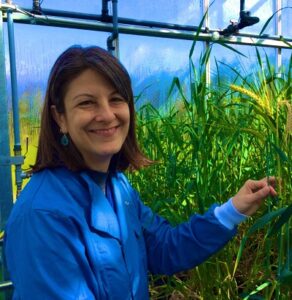
Dr Sónia Negrão
UCD School of Biology and Environmental Science
UCD Profile
Q. Tell us a little bit about your academic background – how did you get to where you are now and what you are working on?
A. It’s a little bit of a mix between passion and luck. I fell in love with genetics in high school. I loved Punnett squares and all of those basic genetics things you would do in high school biology. I also really liked animals and I wanted to go to Vet school. But I didn’t get the points, which seemed unlucky at the time. I cried a lot! But then actually it happened to be the best thing ever. I know now I couldn’t stand to deal with blood and animals suffering. So, I was very lucky – I didn’t get the points to get into Vet school but I got the points to study Agronomy.
I remember when I did the registration, this was old school, way before anything online, they gave us the syllabus, a thick book. I went back home, and I opened it and there was a major in genetics and I was like, ‘oh my god’. I majored in genetics and breeding, and then did a PhD in breeding. Again, I was very lucky because we went on a school visit to a well-known Portuguese research institute and for kicks one of my colleagues said ‘can we do our final year project here?’ and they said yes. So, again, it was a lot of luck! My final year project was on rice and genetic modification. After that, I wanted to go back to my roots in plant breeding, and so I did my PhD on breeding in collaboration with the International Rice Research Institute (Philippines). In my postdoc, I started to focus more on abiotic stress and genomics in rice.
Then, again through chance, I went to a conference and gave an oral presentation. Sitting in the audience was Professor Mark Tester, who is one of the best-known researchers in salinity tolerance research. He really liked my presentation, and on the coffee break he chatted with me, and asked loads of questions. I didn’t understand at the time but that was a job interview, and in the end he offered me a position on his group. I went to Saudi Arabia for five years, at the King Abdullah University for Science and Technology, working with Prof Tester as a research scientist. I learned a lot during that time.
Then things started to cement. I like genomics, I like genetics, I like working with crops, I realise that I could work with any crop, not only rice, and so abiotic stress became my thing. That’s when I came to Ireland and started to study barley because it’s the most important crop in Ireland. Barley is very important for the malting industry here, for both brewing and whiskey. It made sense to get out of salinity because it rains a lot here, so I started working on waterlogging in barley.
“That’s when I came to Ireland and started to study barley because it’s the most important crop in Ireland. Barley is very important for the malting industry here, for both brewing and whiskey”.
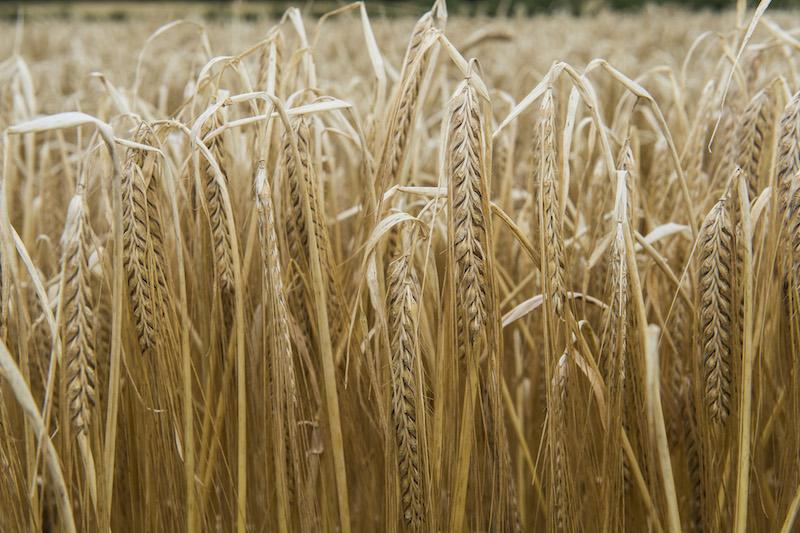
Q. What does abiotic stress mean? Do waterlogging and excess salinity both count as abiotic stress?
A. Yes. Abiotic stress is something that’s environmental. It can be heat, cold, ozone, drought, waterlogging, salinity, nitrogen, nutrient deficiencies, all of these are abiotic stress. Biotic stress comes from life – bio – so it’s all the organisms, such as insects, fungi and so on, all those microorganisms and the related diseases. For instance, with more rain you have waterlogging, and if the temperature is also high you have perfect conditions for fungi to develop – a humid environment and hot environment. There are several things to consider when targeting complex plant responses; thus a multidisciplinary approach is key to advance plant science. For example, the use of new technologies from gene editing to computer science, artificial intelligence, computer vision, and different types of state-of-the-art equipment.
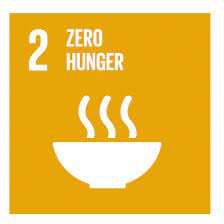
“The big challenge is to feed 10 billion people by 2050. I believe that the right answer is that there is no right answer. You have to come up with different strategies, methodologies, different ways of looking at this.”
Q. What are the big challenges that motivate your research?
A. Well the big challenge is to feed 10 billion people by 2050. I believe that the right answer is that there is no right answer. You have to come up with different strategies, methodologies, different ways of looking at this. Climate change is the biggest threat. Climate change will not only impact the environmental stress, for instance it brings extreme weather events, like droughts, rains, and importantly a sort of unpredictability that happens in farmers’ fields. This was always the case, but unpredictability is now even higher. Climate change will also bring new diseases, which didn’t exist before in particular areas. The temperatures are changing, there’s a northward shift of the climate zones. For instance, in fifty- or eighty-years times things that you cannot cultivate in Ireland now, you may be able to, because we’ll have the temperature for it.
“The temperatures are changing, there’s a northward shift of the climate zones. For instance, in fifty- or eighty-years times things that you cannot cultivate in Ireland now, you may be able to, because we’ll have the temperature for it.”
These are the major challenges, and the right answer is to use all the knowledge that we possibly have. We need to knowledge about environmental stress, biotic stress, and we need to use new technologies. For example, use biostimulants, use transgenic crops, use gene editing, all of the technologies and knowledge we have available. In my case, I’m using imaging analysis so we’re flying drones and using very sophisticated cameras to detect the stress before it becomes visible to the human eye. In that sense we gain time. In the future we can predict the stress before it happens through the cameras. Also very important are the prediction models, working with artificial intelligence.
When I say there is no right answer I mean that we have to have a multidisciplinary approach and use technology and be aware that we will all be in the same boat. I’m focusing on waterlogging, but then maybe in a couple of years I will be focusing on drought, on a different crop, to adjust. We’re surfing the beginning of the wave.
Q. It sounds like a very big challenge that you need to think about at a high level but also locally?
A. Yes. The local includes things like changes in dietary patterns. Younger people nowadays, teenagers, they are much more aware of climate change. Many of them are becoming vegan and vegetarian. So it’s also about thinking how in fifty years’ time, things like diets will be different. Trying to do as much as we can, to the best of our knowledge. That’s the most important thing, trying to do the best we can.
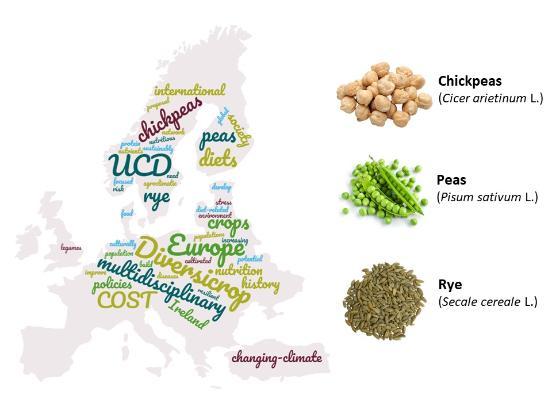
Q. You have been working with Dr Meriel McClatchie from the School of Archaeology and others on the DIVERSICROP project which is one of our Strategic Priority projects. The project looks to the past and the present of underutilized crops in Europe and their potential to supply key nutrients and improve diets and risk of diet-related diseases. How do the two disciplines work together?
A. There are lots of crop diversification projects and they are excellent, but they all look at what’s happening in the present: the supply chain, policy, agricultural challenges, plant science, all of that. We thought that we have to learn from our mistakes, from previous problems. For instance, during the last ice age, the climate was different, so 5000 years ago the crops that we were cultivating in Ireland were very different, because the climate back then was different. Learning from the past can give us insight into the future.
We have to move towards a more sustainable agronomic practices, with lower inputs of nitrogen, fertilisers, pesticides. We can learn a lot from the past, this knowledge can help us adapt in the present and to the future. If we know, then we can adapt. If we don’t know, we are just looking into the present and missing the longer perspective.
DIVERSICROP also brings in nutrition and policy, so the economic and socio-political part, to try to understand the underlying reasons why some methods or crops are underutilised while others are “overutilised”. Barley for instance in Ireland is an extremely successful crop, as well as pasture species. And it all comes from the economic perspective that you should do what you’re good at, but this leads to high specialisation. Thus, in the long run we are missing a lot in terms of adaptability.
“We have to move towards a more sustainable agronomic practices, with lower inputs of nitrogen, fertilisers, pesticides. We can learn a lot from the past, this knowledge can help us adapt in the present and to the future.”
Q. Tell us about your Future Research Leaders project which you were awarded funding for from Science Foundation Ireland?
A. This project looks into heritage barley. We sampled barley collections from Northern Europe. We picked Northern Europe because it is a region more prone to waterlogging and flooding problems. If I was doing a drought project I’d be targeting a South of Europe collection. We sampled 365 lines. 80% of them are before 1990, are considered formally bred cultivars, which were part of breeding programs and also landraces, i.e., lines that were selected by farmers
Some of these lines were released in 1920. They were the barley that our great grandparents would have cultivated and used to drink beer. They would have been used by the malting industry. We assembled the collection and we genotyped all of them. Meaning we have a short sequence, not a full sequence, of the key genes and how different they are from line to line We examine these lines in both glasshouse and field conditions under control and waterlogging stress.
Do we have lines that can tolerate stressors better than others and can we identify genetic regions enabling barley to be better cope with waterlogging? Can we identify those genomic regions in the genome, and say that for example in chromosome 4, there’s a region that is associated with yield under waterlogging conditions? We know the plants that have those genes in that kind of allelic form are better able to cope with the waterlogging, and have better yield compare to those that don’t have that genetic marker.
This year we had 1.5 hectares, the equivalent to one and a half football fields. It was all done at UCD Lyon’s Farm, we flew drones to look into the plants and we have a collaboration with Kevin McDonnell and Eleni Mangina (from the Schools of Biosystems and Food Engineering and Computer Science) and using machine learning to look into the images. The other partners are the James Hutton Institute and the International Barley Hub, which was recently funded by the Scottish government. We’re also working with a university in France, University Picardie Jules Verne, which is also helping us on the controlled conditions, because we don’t have the facilities we need.
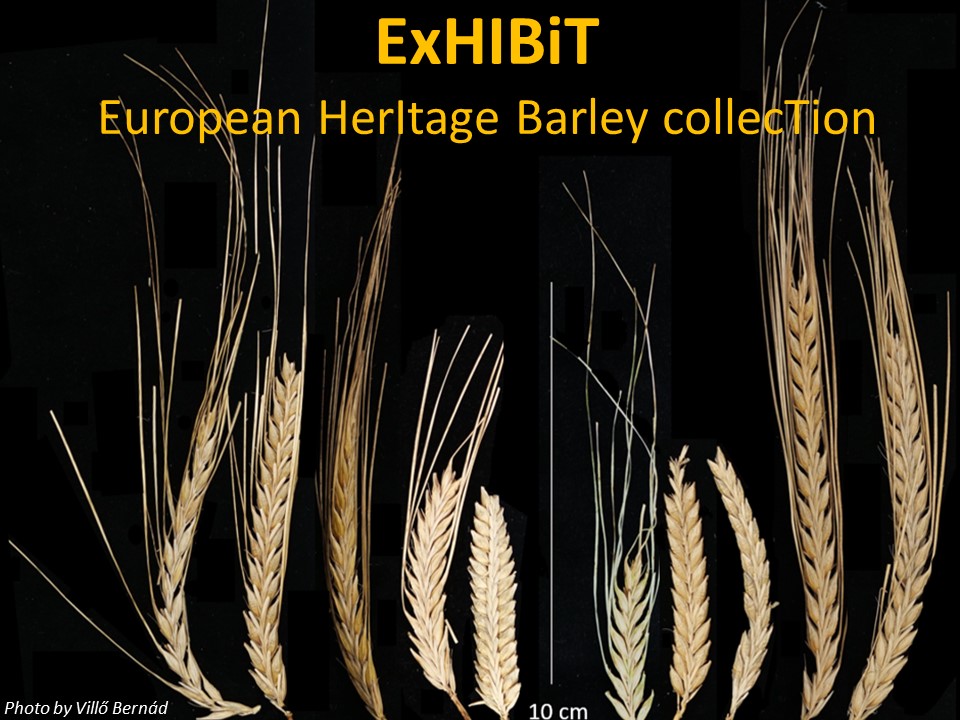
“The hypothesis is that heritage lines, older lines that were cultivated in the past, over a hundred years ago, while agronomically speaking they are not good, they may have specific traits of resilience.”
Q. What potential do heritage grains have to help with agronomic issues today?
A. The hypothesis is that heritage lines, older lines that were cultivated in the past, over a hundred years ago, while agronomically speaking they are not good, they may have specific traits of resilience. For instance, one may have a different root system that can be explored for better drought tolerance. You might also have underlying genetic mechanisms to enable them to cope with a specific disease that existed a hundred years ago and is coming back now with climate change in that region. We’re interested in exploring those traits. It’s going back to the past, to go towards the future.
Q. You mentioned barley as particularly popular in Ireland. Why do particular crops become dominant in particular countries?
It’s not straightforward. It’s very complex. One of the most important things is of course economics. Ricardo’s law [of comparative advantage] from the early 19th century states you do what you’re good at. In the case of barley – temperate cereals are really well adapted to Irish weather. They do really well here. And pasture. Because of the weather, constant rain, it’s good for cattle, all of that feed works really well. That’s why Ireland became good at beef production and grazing. Dairy is great because of that. On the other hand, this leads to specialisation.
If you look at a more arid climate with lots of drought, poor rain, there are varieties that are more resistant to harsh heat conditions. If you compare the barley yields in Portugal or Southern Spain, they’re not that high. The weather is not as suited as it is here. So you can have specialisation in other species that are well adapted to a drier and hotter climate like wine grape. What becomes successful in a particular region is a combination of environmental adaptation, evolutionary adaptation. Over thousands of years, species become very well adapted. It’s also down to socio- economics and policies.
“Sequencing is when you map the whole genome of a species. It’s basically like having the instruction booklet for a species.”
Q. In terms of technologies, what kinds of things have changed the scope of what can be done in your area?
A. Two big things. Firstly, amazing advances in sequencing technologies. If you look back twenty years ago, say in 2000, the first genome of a plant came out- Arabidopsis, which was a very small genome. In 2001 came the rice genome sequence, but very drafted and low quality compared to nowadays Rice is a crop that feeds more than half of mankind. It’s one of the most important crops in the world. Then came all the new sequencing technologies that really sped up the process, reduced the costs tremendously, and all the computational tools that allow to have a deeper insight into genomes.
Sequencing is when you map the whole genome of a species. It’s basically like having the instruction booklet for a species. Imagine if you have a dishwasher, and you’re putting the dishes in but you’re not exploring the fullest of what it can do. Then you get the instructions, and you realise, wow, I have this programme I can wash the dishes in half an hour, my electricity bill will be less. In a nutshell, sequencing gives you an instruction booklet to better understand the genetics of a species.
When first genomes came out, it took many years to complete, and sequencing cost were very high. Nowadays the cost has dropped almost exponentially. It’s incredible. Because of that, you now have breeding instructions for everything. It’s simpler to perform gene editing, transgenics, dive into association mapping, designing primers to enable the breeders to know, scanning the genome, which genes do we want, which lines. It’s so much faster than putting everything in the field and then waiting, looking with your eyes.
Sequencing also opens the door to CRISPR Cas9 gene editing technology, where you can precisely “cut and paste” genes, in a very specific way, because you have the manual of instructions. So, I would say the first big change in technology in recent years was the improvement in sequencing technologies and their cost reduction.
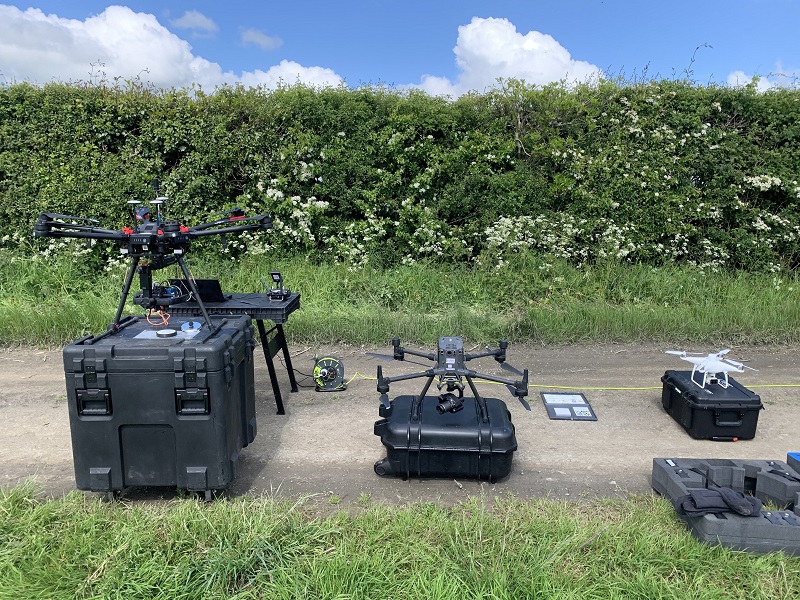
“Nowadays you have image-based technologies that enable you to look at the plant and follow exactly the same plant, quantitatively and non-destructively, daily if you wanted to. You can do this in the field with drones.”
The second big technological development was in phenotyping. Twenty years ago, phenotyping was basically harvesting and “destroying” the plants to measure them. Nowadays you have image-based technologies that enable you to look at the plant and follow exactly the same plant, quantitatively and non-destructively, daily if you wanted to. You can do this in the field with drones. That’s very powerful, you can look at the plants and how they are changing and adapting to the surrounding environment.
Then it’s about analysing that data, so the next challenge is the big data problem. You have terabytes of data with images and loads of traits. Before you were just measuring the plant height and biomass, but suddenly you have the colour, stress indices and many other characteristics. Which ones are the one you need to know about? This goes to data analysis and computer scientists, to decipher what are the plants telling us. That’s the biggest challenge – the next challenge. There’s a tsunami of data, and the challenge is how do we interpret that. How do we have a biological sense of what those numbers mean? That’s about training people, the next generation of scientists.
Q. How does your work related to others in the Institute in terms of crops?
A. So Angela Feechan and Fiona Doohan look at fungi, the bacteria, the diseases, and they also look at biostimulants, so different things you can put in the rhizosphere that makes the plant happy. Tancredi Caruso looks at what is there already in the rhizosphere, so in the roots, what are all the organisms there. That can make that plant became happy or sad. And then Saoirse Tracy looks at the root architecture. She uses all the imagery and all the cool technologies to look at the root to see how can the root uptake better, how can the root do this or that? Angela and Fiona are looking at the shoot of the plant and all the diseases. I look at the shoot of the plant and all the environmental stressors. You need different people coming together, multidisciplinary teams. The modelling is another type of expertise, statisticians, genetic statistics.
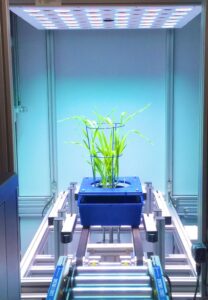
“My lab is basically UCD’s Rosemount Environmental Research Station. We have our phenotyping instruments there, we grow the plants in the glasshouse, we look into the plants there”
Q. What’s an average day like for you?
A. Chaos! There’s no average day. It’s just putting out fires. I don’t have too much lab time. In my case my group is very different, we don’t have a lab in the normal sense. I have now a 4th year student and a new postdoc, who are looking into nitrogen content of plants, just a small satellite project. They would use the labs in the School of Biology and Environmental Science in Science West. That would also be where we extract the DNA to send to James Hutton to genotype barley lines. This is the lab aspect.
My lab is basically UCD’s Rosemount Environmental Research Station. We have our phenotyping instruments there, we grow the plants in the glasshouse, we look into the plants there. All my phenotyping equipment that I got through my SFI Grant, it’s there. We have an equipment that’s unique in Ireland that images the shoots of plants using state of the art cameras. Then it’s the field of course, in Lyons Farm. Because I’m dealing with spring barley, I only work in the field from April to end of August. I have someone working in Lyons now working full time. to process all the samples, a research assistant called Tim, he’s brilliant. He’s processing all of the barley, thrashing, weighing, cleaning, processing the grains. He’s milling and getting flour.
“Some of the major advances in genetics at the beginning of the 20th century came from statisticians. The basis of quantitative genetics is statistics.”
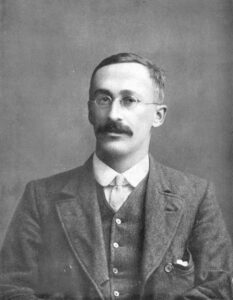
Q. There seems to be more interest amongst farmers lately to experiment with different grains, heritage grains etc?
A. There is a bit of a movement, a renaissance, and it is to do with Irish whiskey. The number of distilleries has increased a lot in recent years. There were maybe four distillers in 2008, in all of Ireland, now there are like 20, 30. Irish distillers are starting to explore the US market, you have to distinguish yourself with a different product, so it’s all about premiumisation. There are a few malting companies working like this, sowing specific heritage barley, Irish barley.
Guinness have an interesting history. In the beginnings of the last century, Guinness had a breeding station in Ireland, so they developed most of the Irish barleys that I mentioned. Have you heard of the T-student statistic? This is one of the major statistical tools that you do in biology. Where you have a group and you want to compare to another group, which one is better, is this statistically significant? A guy who worked for Guinness as a breeder came up with this the T-test, to assess the yield of barley, which line to move forward in terms of breeding.
Nowadays everyone in the world of statistic uses the T-test. His name was William Gosset but because he worked at Guinness, he couldn’t publish the research under his own name and he published as T Student. That was the name of the author. Now I teach this to my students. Some of the major advances in genetics at the beginning of the 20th century came from statisticians. The basis of quantitative genetics is statistics.
